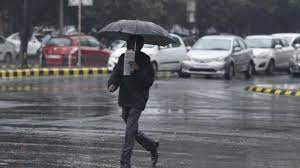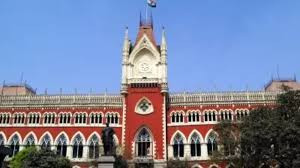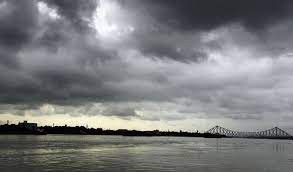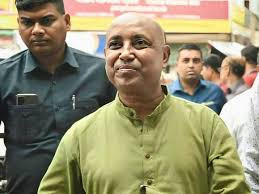Torrential Rains Fail to Bring Relief in South Bengal as Humidity Soars Amid Bay of Bengal Low Pressure

IIE DIGITAL DESK : South Bengal continues to reel under oppressive weather conditions as a low-pressure system over the Bay of Bengal triggers rainfall across several districts, but offers no relief from the intense humidity. While parts of Kolkata and its surrounding regions have experienced intermittent showers since Saturday, the weather remains stiflingly uncomfortable, with high moisture content in the air making it difficult for residents to cope.
According to the Alipore Meteorological Department, a low-pressure area has formed over the northwestern Bay of Bengal, close to the Odisha and West Bengal coasts. Though the system has brought widespread cloud cover and scattered rainfall, the expected dip in temperature has not followed. Instead, relative humidity has surged above 90% in several areas, creating a suffocating environment even after the rain.
"The system is not strong enough yet to usher in a full monsoonal effect. The rainfall is patchy and not continuous, so the ground remains warm, and evaporation rates are high. That’s why the discomfort index remains very high," said a senior official from the Met office.
Kolkata, Howrah, Hooghly, North and South 24 Parganas, and parts of East Midnapore have all received showers ranging from light to moderate intensity. However, there has been no significant drop in temperature. Instead, the combination of heat, moisture, and overcast skies has created what many residents describe as a "steamy sauna-like" atmosphere.
In Kolkata, daily life has been disrupted not so much by the rainfall but by the unbearable humidity. Office-goers, commuters, and roadside vendors have all complained of excessive sweating and fatigue, despite cloudy skies. Air conditioners in homes and offices have been working overtime, while electricity consumption has risen sharply.
"I thought the rains would bring some relief from the heat, but it’s become even more suffocating. It feels like I’m drenched the moment I step outside," said Subhasree Ghosh, a college student in South Kolkata.
Meteorologists have explained that this phenomenon is typical during the pre-monsoon or early monsoon transition phase, especially when rainfall is not accompanied by cool winds or widespread atmospheric change. Additionally, the sea has turned increasingly rough due to the impact of the low-pressure zone, making the weather even more volatile.
The Indian Meteorological Department has issued advisories to fishermen, warning them against venturing into the Bay of Bengal due to turbulent sea conditions. Wind speeds along the coast may range from 35 to 45 km/h, with gusts reaching up to 55 km/h in the next 24 to 48 hours.
Local administrations in South Bengal’s coastal districts like East Midnapore and South 24 Parganas have been asked to remain alert. Civic bodies have deployed emergency teams to manage any waterlogging issues or localized flooding, particularly in low-lying urban areas.
Despite the discomfort, the rainfall has come as a partial blessing for farmers, especially in districts waiting for sufficient moisture to begin sowing kharif crops. However, agricultural experts warn that without consistent and moderate rainfall in the coming days, the benefits may be limited.
The Alipore Met Office predicts more rainfall in South Bengal over the next three days, but no immediate drop in humidity levels. The region will have to endure the sticky weather for a little longer until the low-pressure system either intensifies and moves inland or dissipates, making way for more organized monsoon rains.
Residents of South Bengal remain caught between rains that don’t cool and a humidity that refuses to relent—awaiting a real monsoon breakthrough.
You might also like!















